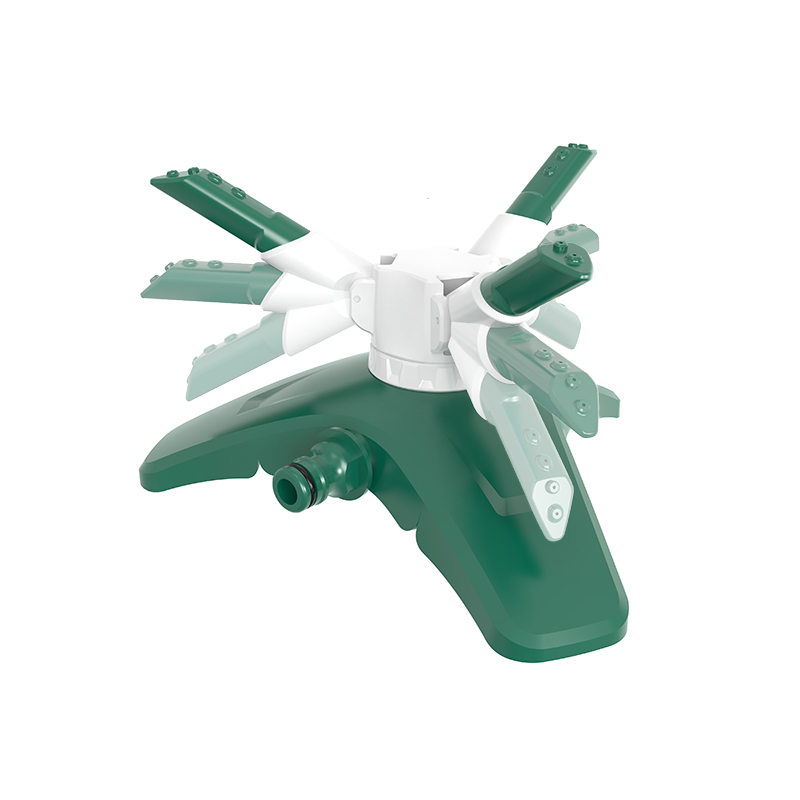- All Reserved. © 2019
- Cixi Tianshuo Industry and Trade Co., Ltd.
- Web support by : HWAQ
Micro-sprinkler irrigation is an irrigation technology […]
Micro-sprinkler irrigation is an irrigation technology that transports pressurized water to the field and moisturizes crop soil and crop foliage with a micro-sprinkler installed on the final pipeline. It is now widely used in greenhouses (greenhouses) for flowers. , Cultivation of nurseries and watering of lawns and flower beds have obvious water-saving and efficiency-increasing benefits.
One, materials and methods
1. System equipment selection: select supporting products that meet the requirements of micro-sprinkler irrigation technical indicators;
2. Method: pressurize the submersible pump, and install the micro-sprinkler head in the ceiling. The crops in the shed are flowers (chrysanthemums, roses, roses, etc.)
Two, operating procedures
(1) Micro spray system
1. Pressurized water source: The water pressure is 2.0~3.0kg/cm2, and the submersible pump with a head of more than 20 meters and a flow rate of more than 5m3/hour can be used for pressure. The irrigation water is free of sand, weeds and debris.
2. The first part of the field: 1 piece of water pressure gauge, specification 1#/120 mesh filter, elbow, tee and other connection accessories.
3. Pipeline
①Main pipe: Choose the anti-aging black PE semi-rigid pipe with a diameter of 40-50mm, which can bear pressure of 3kg/cm2.
②Branch pipe: choose the anti-aging black PE hose with a pipe diameter of 16-25mm that can bear pressure of 1~2kg/cm2.
4. Nozzle: Choose a 360° atomizing nozzle with a flow rate of 40-60L/h and a spraying radius of 1.2-1.5m under 0.1-0.2MPa working pressure.
5. Other accessories: various equal diameter connectors, bypass belts, raw material belts, plugs, etc.
(2) System installation
1. Build a reservoir: build a semi-underground impervious reservoir with a capacity of more than 6m3 near the water source in the greenhouse (greenhouse).
2. Installation of micro-spraying equipment
① Install the micro-sprinkler on the same side of the branch pipe with a special puncher according to the size of the selected greenhouse (greenhouse) and the spraying radius of the micro-sprinkler. Rows and rows of nozzles are arranged in an isosceles triangle combination.
②Install the branch pipes with nozzles along the long direction of the greenhouse (greenhouse) according to the design requirements and install them on the horizontal ceiling.
③Lay the main pipe along the width of the greenhouse and connect it with the branch pipe. The end is blocked with a plug.
3. Assemble the first part of the field: Assemble with matching connectors in the order of the water pressure gauge and the filter. Wrap the oil-free raw material tape on the joint thread to prevent water leakage. If conditions permit, it can be placed between the water pressure gauge and the filter. Install the fertilizer tank.

4. Connect the water pump, the field head, and the water main pipe.
(3) Sprinkler irrigation water supply
1. Pre-storage sprinkler irrigation: fill the reservoir with well water, tap water or clear river water for pre-warming 2 to 3 days in advance.
2. Water supply: start the water pump for water supply, and pay attention to observe whether the water pressure gauge and the micro-sprinkler are operating normally.
3. Sprinkler irrigation time and irrigation volume: Develop a corresponding irrigation system according to the greenhouse (greenhouse) planting crops.
4. Sprinkler irrigation interval: mainly depends on crops, moisture conditions, and weather for irrigation. At the same time, determine whether to irrigate by measuring the humidity and temperature in the greenhouse (greenhouse). Generally, the relative water holding capacity of the planting water and soil should reach 85-90%, and keep it at about 60% in other periods.
(4) Fertilization
The base fertilizer is generally applied in sufficient amount at one time as required, and the topdressing should be irrigated immediately after the application of the topdressing to prevent the fertilizer from burning the crop leaves. The foliar fertilizer can be sprayed with water, and the pesticide can also be sprayed separately with a micro-spray system.
(5) System management
1. Installation and management must be standardized, and no disassembly and random drilling are allowed.
2. The filter equipment and reservoir should be cleaned in time to avoid clogging the nozzle or damaging the nozzle by sediment and debris.
3. When crops are changed, store the sprinkler irrigation equipment in storage to avoid sun, rain, and stacking that may affect the life of the equipment.
Three, benefit
1. Water saving: Micro-sprinkler irrigation is evenly water-saving, 50-70% less water than conventional ground irrigation, and the quota is equivalent to 17% of ground irrigation and 40% of furrow irrigation. The water-saving rate is quite high.
2. Labor saving: The micro-sprinkler irrigation system can be used to irrigate water only by turning on and off the pump. There is no other process, semi-automatic fertilization and spraying can be carried out, which greatly reduces the labor intensity of field irrigation, fertilization and pesticide application, and does not need to level the ground. , Saving labor days.
3. Reduce pests and diseases and save pesticide fees:
Micro-sprinkler irrigation can effectively and timely adjust the humidity and temperature of the environment, inhibit the breeding speed of pests and diseases, greatly reduce pests and diseases, and relatively reduce the input of pesticides.